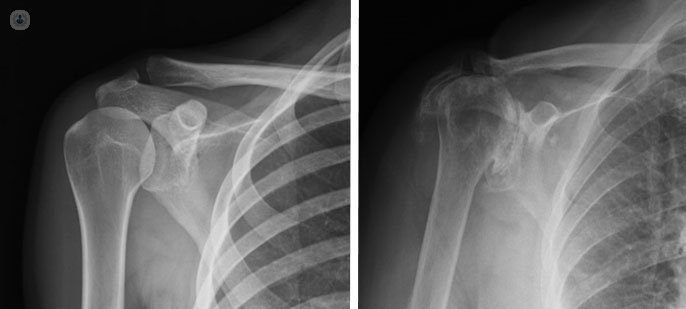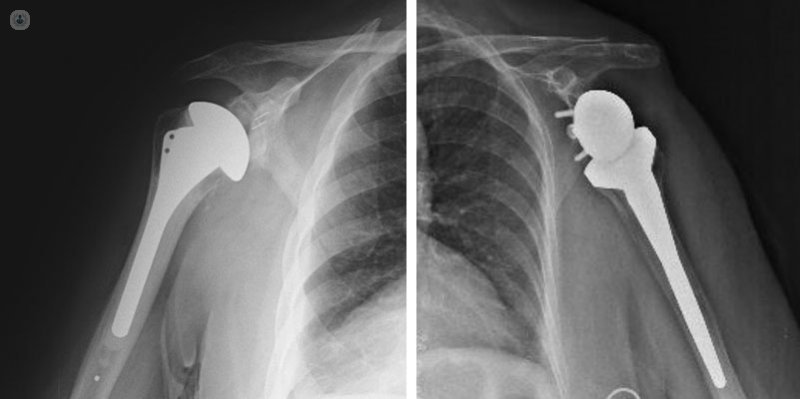Shoulder prosthesis: 4 key points
Written by:Sometimes when there are major shoulder injuries, treatment indicated for these patients is the shoulder prosthesis, which is to replace the affected an artificial joint, which allows you to back all its functions and significantly improves quality of life patient.
Indications for shoulder prosthesis
In some patients, the shoulder joint has a significant impairment, which may be due to joint destruction by osteoarthritis, a previous trauma fracture, or by massive rupture of the rotator cuff (the set of muscles and tendons that provide mobility shoulder). This deterioration causes pain and mobility limitation that preclude patients to perform their usual activities, leading to a significant loss of quality of life.
In the case of arthritis and massive tears sleeve, patients are usually older than 65 years, but sometimes can occur in younger patients, especially in cases of fractures.

Types shoulder prosthesis
A prosthesis is to substitute the metallic components and / or plastic (polyethylene), both at glena (scapula area forming the joint) and at the level of humerus head joint.
There are several types of shoulder prosthesis, but if we specify, we can establish two most common types:
- Anatomic prosthesis keeps similarity with the anatomical shape of the shoulder (a concave glenoid component and a semi-spherical component in the humerus). It is indicated in cases of osteoarthritis with good rotator cuff.
- Reverse prosthesis designed unlike normal anatomy, ie a semi-spherical component in a concave glenoid and humeral component. It is indicated in massive tears sleeve, with or without added osteoarthritis.

Shoulder replacement surgery: what it is
To place a prosthesis, the orthopedic surgeon must perform an anterior incision in the shoulder, through which access the joint. Using a specific material, a resection of the damaged area of the joint is made and, instead, the prosthesis is placed, that makes the function of a new joint. Thanks to the great progress made, both from the point of view of anesthesia and surgical technique, have achieved very considerably minimize surgical risks inherent in any surgery.
This new joint (prosthesis) eliminates pain and improves mobility, reaching in most cases to an almost complete mobility and pain, which significantly improves the quality of life of patients.
Postoperative shoulder replacement surgery
After surgery, the patient will remain for a period of three or four days, as usual measure of control in this type of surgery. Also, the patient should maintain a sling for about three weeks, after which it will start progressively mobilizations and perform rehabilitation, which will vary depending on the evolution.


